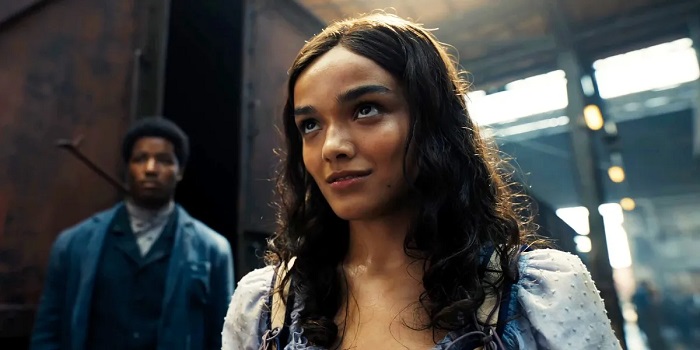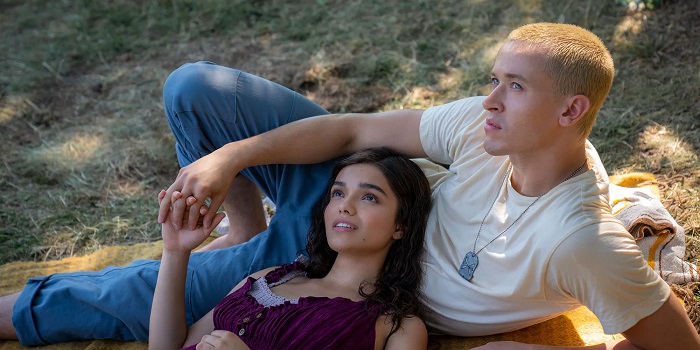The fifth installment in The Hunger Games cinematic universe, The Hunger Games: The Ballad of Songbirds and Snakes, is slated for a release date of November 17, 2023. The film will serve as the origin story of the tyrannical ruler of Panem, Coriolanus Snow, played by Donald Sutherland. In addition to Snow, the film will also look back on how the Hunger Games first began and will revolve around the faces, reasons, and themes behind the dynastic slavery and establishment.
Just as the original four installments feature Jennifer Lawrence as Katniss Everdeen, the fifth film is going to focus on Lucy Gray Baird (also a tribute from District 12) as young Snow’s (played by Tom Blyth) love interest, played by Rachel Zegler. The rebellion song “The Hanging Tree” that Katniss Everdeen sings in The Hunger Games: Mockingjay Part 1 actually had its origins somewhere else. Let’s find out how and why this song is so important.
What Is the Significance of the Song “The Hanging Tree”?

“The Hanging Tree,” is more than just a haunting melody in the original narrative of The Hunger Games series. The song becomes the symbol of defiance against the oppressive Capitol in the Hunger Games narrative. Its roots trace back to District 12’s history and will now be explored in The Ballad of Songbirds and Snakes, which is the official prequel for the Suzanne Collins-penned series.
Katniss carries a personal connection with the song as it’s a cherished memory of her father. This song, however, while deemed taboo in District 12 due to its rebellious undertones, takes on new life when Katniss voices it. In doing so, she not only connects with her past but also ignites a spark of rebellion across the districts. Serving as a call to arms, the song transforms into an anthem of unity against tyranny. Well, “The Hanging Tree” was originally sung by Lucy Gray Baird during the 10th annual Hunger Games.
What Is the Story Behind “The Hanging Tree”?

“The Hanging Tree” has deep roots in the lore of Panem, particularly District 12. The song tells a chilling tale of a man named Arlo Chance from District 12, who was hanged for murder, beckoning his lover to join him in death. Its story is intertwined with both defiance and tragedy. In The Ballad of Songbirds and Snakes, the song is revealed to have been composed by Lucy Gray Baird, a tribute from District 12 in the 10th Hunger Games and a love interest of a young Coriolanus Snow.
For Katniss, the song held a personal connection as it was one her father used to sing. She learned of its taboo nature when her mother warned her never to sing it outside their home. Particularly because it was recognized as a testament to rebellion against the Capitol’s atrocities, thanks to Lucy Gray Baird.
Who Is Lucy Gray Baird?

Lucy Gray Baird will be selected as District 12’s female tribute for the 10th Hunger Games. She existed 64 years before Katniss Everdeen but the two share similar traits and history. In the film, she is slated to stand out for her music and romantic attachment to young Coriolanus Snow. She has been revealed as the voice behind the resistance song “The Hanging Tree,” in a recent release from The Hunger Games franchise.
Her relationship with a young Coriolanus Snow will become the central thread of the story. It will evolve from mentorship to romance, and will likely be followed by betrayal. This bond not only offers insight into Snow’s transformation into Panem’s tyrant but also highlights Lucy Gray as a representation of District 12’s indomitable spirit.
How are Lucy Gray Baird and Katniss Everdeen Related?

Lucy Gray Baird and Katniss Everdeen have their stories set decades apart. They are not related by blood, but they share deep connections to District 12’s history and culture. Both hail from the same district, both of them sing, and their lives are bridged with the legacy of “The Hanging Tree.”
How Does “The Hanging Tree” Bridges Katniss Everdeen and Lucy Gray Baird?

“The Hanging Tree” acts as a bridge between Katniss Everdeen and Lucy Gray Baird by connecting two strong-willed women from different eras of Panem’s history. Lucy Gray, as the composer, instills the song with the raw emotions of love, loss, and defiance while drawing inspiration from a tragic event in District 12. Decades later, Katniss unknowingly channels these same emotions.
She sings the song as a symbol of rebellion against the Capitol’s tyranny and it catches on. For Katniss, the song also holds personal memories of her father, binding her to District 12’s past. In simple words, Lucy Gray is the composer of this haunting song, which is later brought to life by Katniss and then it becomes a symbol of rebellion against the Capitol.
 Follow Us
Follow Us





